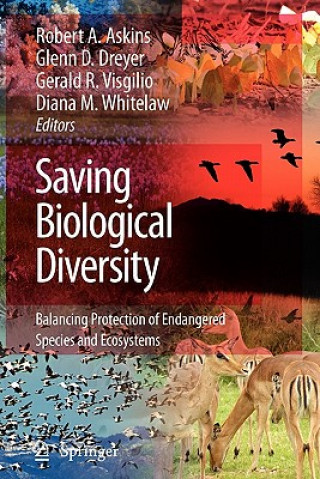
Dostava
Savjetnik za kupnju





Proizvod vam ne odgovara? Nema veze! Možete nam vratiti unutar 30 dana
 Poklon bon
u bilo kojoj vrijednosti
Poklon bon
u bilo kojoj vrijednosti
S poklon bonom ne možete pogriješiti. Za poklon bon primatelj može odabrati bilo što iz naše ponude.
Saving Biological Diversity
 Engleski
Engleski
 440 b
440 b
30 dana za povrat kupljenih proizvoda
Moglo bi vas zanimati i


The distinctive contribution of this book is that it presents a pragmatic approach for preserving biological diversity. Experts in a wide variety of fields, including philosophy, environmental policy, law, economics and biology, present different perspectives on how to prevent widespread extinction around the world. Several chapters deal with basic questions such as how we should define biodiversity and how we should determine what is most important to save. Two chapters focus on how we can place an economic value on biological diversity, a step that is often critical for gaining acceptance for conservation efforts. One of the major conclusions is that people are often willing to pay to preserve natural systems that have no immediate value in terms of generating income or commodities. Other chapters are case studies of efforts to protect particular species or ecosystems; these provide practical guidelines for how to protect biodiversity more effectively. §The book is divided into three sections: we start with discussions of efforts to protect endangered species; move to approaches for protecting intact, functioning natural ecosystems; and finish with proposals to protect the global natural system (the biosphere). It becomes clear as one progresses through these sections that these three approaches do not constitute distinctly different, much less competing, strategies for protecting biological diversity. Instead they are interdependent. Efforts to protect a particular endangered species typically lead to efforts to protect its ecosystem. Similarly, efforts to protect an ecosystem lead naturally to concerns about the atmosphere, climate and water supplies. The interdependence may also work in the other direction: loss of species potentially can undermine the stability and resilience of ecosystems, which can have a large negative impact on the biosphere. The main conclusion is that a wide range of approaches to conservation is needed to maintain diverse and ecologically functioning natural systems.The distinctive contribution of this book is that it presents a pragmatic approach for preserving biological diversity. Experts in a wide variety of fields, including philosophy, environmental policy, law, economics and biology, present different perspectives on how to prevent widespread extinction around the world. Several chapters deal with basic questions such as how we should define biodiversity and how we should determine what is most important to save. Two chapters focus on how we can place an economic value on biological diversity, a step that is often critical for gaining acceptance for conservation efforts. One of the major conclusions is that people are often willing to pay to preserve natural systems that have no immediate value in terms of generating income or commodities. Other chapters are case studies of efforts to protect particular species or ecosystems; these provide practical guidelines for how to protect biodiversity more effectively.
Informacije o knjizi
 Engleski
Engleski
Kategorija




 Kako kupovati
Kako kupovati
































